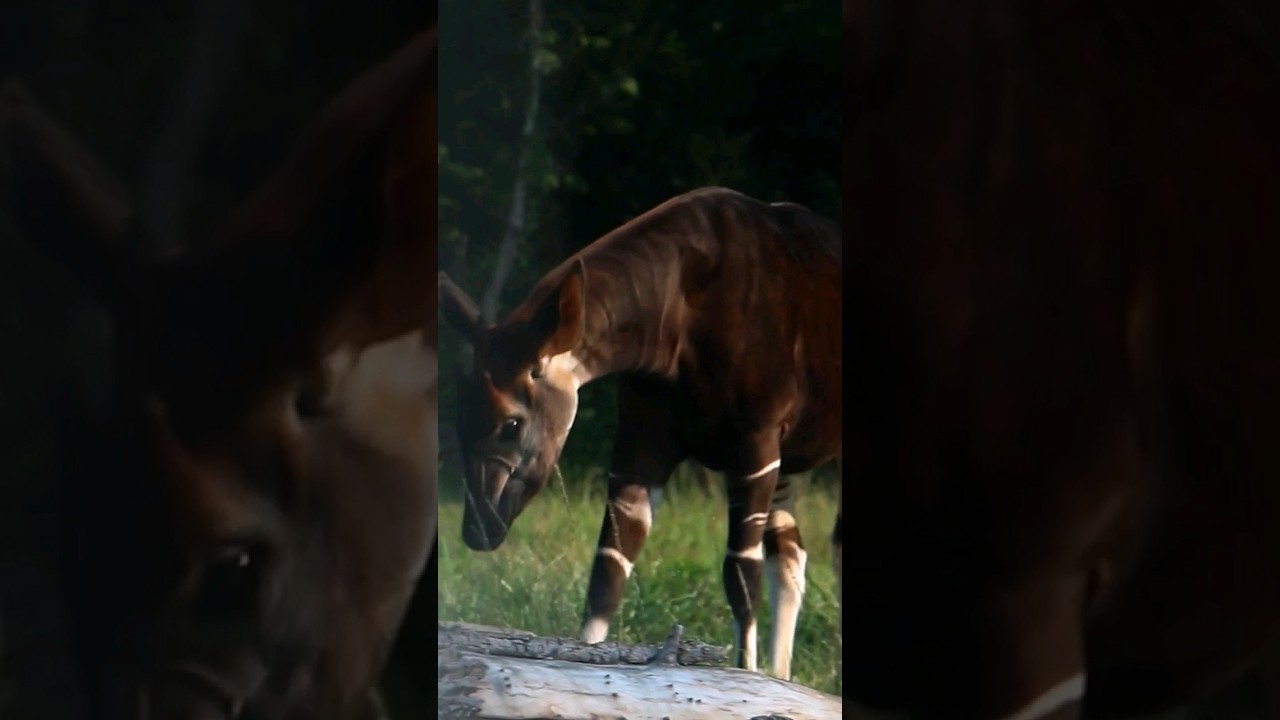Summary:
1. Introduction to the Okapi: A Unique Species
2. Physical Characteristics of the Okapi
3. Habitat and Distribution of the Okapi
4. The Intriguing Relationship with Giraffes and Zebras
5. Conservation Efforts for the Okapi
The Okapi: Unlocking the Mysteries of this Enigmatic Creature
Have you ever heard of an animal that looks like a mix between a giraffe and a zebra? Well, allow me to introduce you to the fascinating world of the Okapi. This elusive and enigmatic creature is often mistaken for a zebra due to its striped hindquarters, but it’s more closely related to giraffes. Let’s dive deep into the unique and captivating aspects of the Okapi that make it an extraordinary addition to the animal kingdom.
The Okapi is a genuinely remarkable species, shrouded in mystery and intrigue. Native to the dense rainforests of Central Africa, specifically the Democratic Republic of the Congo, this enchanting creature was only discovered by Western scientists in the early 20th century. Its discovery added a new level of excitement and wonder to the field of zoology.
One of the most distinctive physical characteristics of the Okapi is its velvety, reddish-brown coat with prominent white stripes on its hindquarters. These stripes act as fantastic camouflage in the dappled sunlight of the rainforest, allowing the Okapi to blend seamlessly with its surroundings. Surprisingly, the stripes are absent on their front legs, neck, or head. This unique adaptation serves to confuse predators and aid in their survival.
The Okapi possesses several other intriguing features that set it apart from other species. With its large, rounded ears and a long, prehensile tongue, this creature is well-equipped to navigate its dense rainforest habitat. Its tongue, which can extend up to 18 inches, helps it reach leaves and shoots in hard-to-reach places, providing the Okapi with a varied diet.
Speaking of diet, the Okapi prefers foliage, consuming over 100 plant species. It enjoys indulging in the various leaves, fruits, and buds the rainforest generously offers, making it an essential component of seed dispersal within its ecosystem. These browsing habits contribute to Okapi’s role as a critical player in maintaining the balance of the rainforest.
Now, let’s focus on the Okapi’s habitat and distribution. As mentioned earlier, these magnificent creatures call the rainforests of the Democratic Republic of the Congo their home. Within this vast and diverse habitat, they frequent lowland areas and easily traverse dense vegetation. The moist environment provides them with everything they need for survival, from food to shelter and protection.
Interestingly, Okapis are pretty elusive and solitary creatures. They tend to roam alone or in small groups, with males and females only coming together during mating. Female Okapis demonstrate remarkable care for their young, with a gestation period of approximately 14 to 16 months. This extended pregnancy period is driven by their need to ensure their offspring’s proper development and survival.
Now, let’s delve into Okapi’s intriguing relationship with giraffes and zebras. At first glance, one might assume that the Okapi’s resemblance to a zebra suggests a close familial relationship. However surprising as it may seem, the Okapi is more closely related to the giraffe. Their shared ancestry can be seen in their similar bone structure, including the number and arrangement of their neck vertebrae. This unexpected connection adds another fascination to Okapi’s already captivating story.
Even though the Okapi is not as well-known as some other charismatic species, such as lions or elephants, we must strive to protect this incredible creature. Conservation efforts have been underway for several decades, with organizations like the Okapi Conservation Project working tirelessly to preserve their rainforest habitat and raise awareness about the Okapi’s importance in maintaining the ecosystem’s delicate balance.
By supporting local communities, conducting research, and fostering sustainable practices, these conservation organizations are working toward a future where the Okapi can thrive alongside other magnificent creatures in their natural habitat.
In conclusion, the Okapi is a genuinely extraordinary creature that captivates the hearts and minds of all who encounter it. Its unique appearance, intriguing relationship with giraffes, and vital role in maintaining the rainforest ecosystem make it a species worth celebrating and protecting. So, the next time you visit a zoo and have the opportunity to catch a glimpse of the Okapi, remember how fortunate we are to share our world with such fascinating and elusive creatures. And don’t let those stripes fool you – the Okapi is much more than meets the eye!
*****
Source Description
did you know the Okapi is more closely related to the giraffe than the zebra? Don’t let the stripes fool you!

